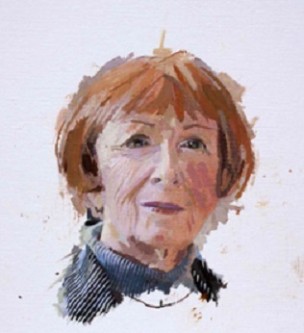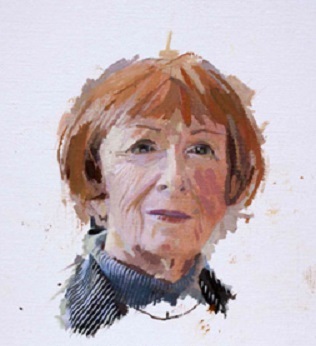 United Kingdom Kol Nidrei – Elegy for Pamela: Wihan Quartet (Leoš Čepický & Jan Schulmeister [violins], Jakub Čepický [viola], Michal Kaňka [cello]), Wigmore Hall, London, 27.9.2017. (CS)
United Kingdom Kol Nidrei – Elegy for Pamela: Wihan Quartet (Leoš Čepický & Jan Schulmeister [violins], Jakub Čepický [viola], Michal Kaňka [cello]), Wigmore Hall, London, 27.9.2017. (CS)

Beethoven – String Quartet in Bb Op.130, Cavatina: Adagio molto espressivo
Cheryl Frances-Hoad – Invocatio (world premiere)
Mika Haasler – A Fugue for Pamela (world premiere)
Cecilia McDowall – To a Nightingale (world premiere)
Roxanna Panufnik – Votive (world premiere)
Freya Waley-Cohen – Vitae (world premiere)
David Knotts – At the Mid Hour of Night (world premiere)
William Zinn – Kol Nidrei Memorial
The six new compositions which were premiered during this lunchtime concert at the Wigmore Hall celebrated the work of the Cavatina Chamber Music Trust and commemorated the life and inspiring work of Pamela Majaro MBE, who co-founded the Trust in 1988 with her husband, Simon. Cavatina’s mission is simple: ‘to introduce chamber music into the lives of young people and develop young audiences’ interest in chamber music performance.’ During Pamela’s twenty-year tenure as Executive Trustee, 130,000 children attend the 50 annual school concerts that she organised, and the Cavatina Free Ticket Scheme has now been introduced in over 50 venues in the UK.
When she died in 2016, Simon decided to mount a memorial concert for his wife, the programme of which he wished to reflect her own musical passions and dreams. He commissioned six contemporary composers whose work Pamela admired and with whom she had worked in the past, and these new compositions were framed by the Cavatina from Beethoven’s Op.130 and – because she admired the Wihan Quartet’s recording of his music – William Zinn’s Kol Nidrei Memorial.
The Wihan Quartet celebrated their 30th anniversary in 2015, and during the last 32 years they have been strong supporters of the Cavatina Trust. The last few years have brought some changes of personnel, though. In 2014, when viola player Jiří Zigmund retired from the Quartet, Jakub Čepický – son of leader, Leoš – joined the ensemble. This year, cellist Aleš Kasprík decided to stop playing in the Quartet and over the coming months they will be performing with two cellists: Matej Stepanek, from the Academy of Performing Arts in Prague, and Michal Kaňka who is currently cellist with the Prazak Quartet.
From the evidence here, Kaňka is a good ‘fit’. His tone is full, and at times quite ‘dark’, but his bass provided strong directional force. Beethoven’s Cavatina is highly charged with emotion – Beethoven himself was reportedly moved to tears by its beauty and profundity – and the Wihan employed a wide, prominent vibrato, creating and intensity which sustained the extended phrases, but which was always tinged with tenderness. As he rose up the D string, Leoš Čepický’s warm sound projected sweetly: the falling fifth of the theme sighed soothingly and was immediately echoed, as if in consolation, by the cello. In the central section, the lower strings’ triplets injected fresh pulse and Čepický’s melody was more isolated against the drier accompaniment. In the closing moments, Kaňka’s C string had a lovely grainy quality, as if striving for the ‘essence’ of something intangible but profound.
A simple violin melody opens Cheryl Frances-Hoad’s Invocatio, accompanied by a three-note revolving pattern: together they create the paradoxical effect of stillness and perpetual movement. The organic thematic development, gradual enrichening of the texture and augmentation of the rhythmic values, together with steadily rising pitch, creates a wonderful sense of brightening – as if the sun has emerged and its rays steep a previously shadowed landscape – as the strings rise to the apex of their registers.
Mika Haasler’s A Fugue for Pamela began life as a piece performed by the Wihan Quartet in 2015 as part of a chamber music concert organised by the Cavatina Trust at Woodhouse College in London. Haasler has now developed her composition, written during her A-level studies, into a dancing fugue the theme of which is permeated by the stately leaps and gestures which characterise the introductory theme. The Wihan produced a wonderfully light sound, so that the fugue texture remained transparent and we could appreciate the wealth of musical idea and the very attractive sonorities and harmonies.
Keats’ ‘Ode to a Nightingale’ was the inspiration for Cecilia McDowall’s To A Nightingale: the composer explains that she imagined Pamela as the nightingale, ‘eloquent, passionate and committed to bring the beauty of wonderful chamber music to young audiences everywhere.’ Kaňka’s rocking, arpeggiac cello part returned repeatedly to the same harmonic centre and provided a powerful gravitational force for the shimmer of the first violin’s tremolando beside Jan Schulmeister’s high melody. Delicately nuanced harmonic explorations evoked a pastoral peace complemented by the sheen and lucidity of Leoš Čepický’s soaring song.
Roxanna Panufnik’s Votive followed, in which a ‘prayer’ was passed through the voices, from the songful cello, to a more anxious, searching viola, then on to the second violin which delicately decorated the melody, and finally to the first violin where it accrued fervency and force suggesting growing faith and certainty. The accompanying chords – pulsing chordal gestures – grew in intensity, culminating in a sweeping, surging, unanimous up-bow flourish at the close.
The Wihan Quartet shaped the bare octaves which open Freya Waley-Cohen’s Vitae most eloquently, before the unity fragmented into alert pizzicato gestures for the middle voices and snatches and motifs that resulted in ever-changing combinations and colours. The juxtaposition of the cello’s lower reaches and violin harmonics was eerie, but as Čepický’s violin melody climbed higher it pulled all the other players with it, their floating harmonics suggesting a release, heavenwards.
At the Mid Hour of Night by David Knotts was inspired by a poem by Sylvia Townsend Warner in which she celebrates the images (‘fantastic shapes’) which come before her, not in dreams, but when awake late at night: ‘A brown garland of apes,/ An Indian with a flail’, ‘An aeronaut run mad,/ A little unicorn/ That sings shrill and clear’, ‘Tumbling acrobats,/ A negress with a basket/ Of avadavats –’. The work’s title is shared by a poem by Thomas Moore, however, the sentiments of which seem just as apt:
At the mid hour of night, when stars are weeping, I fly
To the lone vale we loved, when life shone warm in thine eye;
And I think oft, if spirits can steal from the regions of air
To revisit past scenes of delight, thou wilt come to me there,
And tell me our love is remember’d even in the sky.
Then I sing the wild song it once was rapture to hear,
When our voices commingling breathed like one on the ear;
And as Echo far off through the vale my sad orison rolls,
I think, O my love! ’tis thy voice from the Kingdom of Souls
Faintly answering still the notes that once were so dear.
Townsend Warner’s imaginative fecundity is embodied by the vibrant string dialogues, as the viola’s held note converses with the cello’s pizzicato before they invite the second violin and then the first violin into the conversation. Knotts creates enormous energy in the central section as the whirling viola and curling, running repetitions press forward, though the momentum generated by the tumbling pizzicatos and tremolando violins is brought to rest with composure at the close.
William Zinn’s Kol Nidrei Memorial was composed in 1986 and was dedicated ‘to those individuals who have sacrificed themselves, and continue to do so, for the cause of freedom’. The violins’ ethereal strands were joined by the lower strings in homophonic chords presented with rich vibrato, recalling the intense profundity of the Cavatina which opened the concert. As the woeful theme pulled the heartstrings the Wihan Quartet imposed a quiet control on the emotive unfolding, and the prevailing sentiment seemed to me to be not one of mourning but of hopefulness.
Claire Seymour
